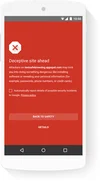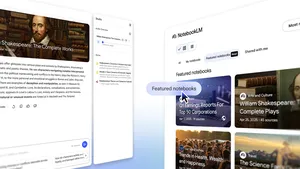Fighting phishing with smarter protections
Editor’s note: October is Cybersecurity Awareness Month, and we're celebrating with a series of security announcements this week. This is the third post; read the first and second ones.
Online security is top of mind for everyone these days, and we’re more focused than ever on protecting you and your data on Google, in the cloud, on your devices, and across the web.
One of our biggest focuses is phishing, attacks that trick people into revealing personal information like their usernames and passwords. You may remember phishing scams as spammy emails from “princes” asking for money via wire-transfer. But things have changed a lot since then. Today’s attacks are often very targeted—this is called “spear-phishing”—more sophisticated, and may even seem to be from someone you know.
Even for savvy users, today’s phishing attacks can be hard to spot. That’s why we’ve invested in automated security systems that can analyze an internet’s-worth of phishing attacks, detect subtle clues to uncover them, and help us protect our users in Gmail, as well as in other Google products, and across the web.
Our investments have enables us to significantly decrease the volume of phishing emails that users and customers ever see. With our automated protections, account security (like security keys) and warnings, Gmail is the most secure email service today.
Here is a look at some of the systems that have helped us secure users over time, and enabled us to add brand new protections in the last year.
More data helps protect your data
The best protections against large-scale phishing operations are even larger-scale defenses. Safe Browsing and Gmail spam filters are effective because they have such broad visibility across the web. By automatically scanning billions of emails, webpages, and apps for threats, they enable us to see the clearest, most up-to-date picture of the phishing landscape.
We’ve trained our security systems to block known issues for years. But, new, sophisticated phishing emails may come from people’s actual contacts (yes, attackers are able to do this), or include familiar company logos or sign-in pages. Here’s one example:

Attacks like this can be really difficult for people to spot. But new insights from our automated defenses have enabled us to immediately detect, thwart and protect Gmail users from subtler threats like these as well.
Smarter protections for Gmail users, and beyond
Since the beginning of the year, we’ve added brand new protections that have reduced the volume of spam in people’s inboxes even further.
- We now show a warning within Gmail’s Android and iOS apps if a user clicks a link to a phishing site that’s been flagged by Safe Browsing. These supplement the warnings we’ve shown on the web since last year.

- We’ve built new systems that detect suspicious email attachments and submit them for further inspection by Safe Browsing. This protects all Gmail users, including G Suite customers, from malware that may be hidden in attachments.
- We’ve also updated our machine learning models to specifically identify pages that look like common log-in pages and messages that contain spear-phishing signals.
Safe Browsing helps protect more than 3 billion devices from phishing, across Google and beyond. It hunts and flags malicious extensions in the Chrome Web Store, helps block malicious ads, helps power Google Play Protect, and more. And of course, Safe Browsing continues to show millions of red warnings about websites it considers dangerous or insecure in multiple browsers—Chrome, Firefox, Safari—and across many different platforms, including iOS and Android.

Layers of phishing protection
Phishing is a complex problem, and there isn’t a single, silver-bullet solution. That’s why we’ve provided additional protections for users for many years.
- Since 2012, we’ve warned our users if their accounts are being targeted by government-backed attackers. We send thousands of these warnings each year, and we’ve continued to improve them so they are helpful to people. The warnings look like this.
- This summer, we began to warn people before they linked their Google account to an unverified third-party app.
- We first offered two-step verification in 2011, and later strengthened it in 2014 with Security Key, the most secure version of this type of protection. These features add extra protection to your account because attackers need more than just your username and password to sign in.
We’ll never stop working to keep your account secure with industry-leading protections. More are coming soon, so stay tuned.







